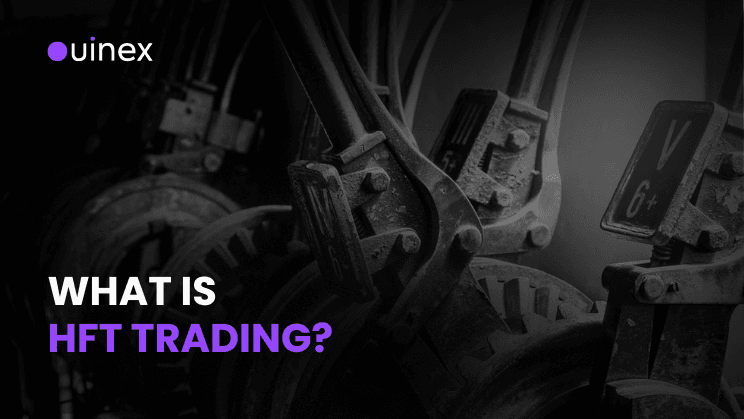
High-Frequency Trading (HFT): Why Institutions Always Get the Better Price
Crypto markets move fast. But High-Frequency Trading (HFT) moves faster. No matter how fast you think you are when trading, institutions using HFT will get there faster. Meaning they will always get the better price.
The end result? You get slipped to a worse price. It also means you never get positive slippage because, oups, someone got there before you.
Key Takeaways
- High-Frequency Trading (HFT) is ultra-fast, algorithmic trading that executes thousands of trades per second.
- Institutions using HFT always get the better price they move faster than any retail trader ever could.
- Retail traders get slipped more often and rarely benefit from positive slippage because HFTs beat them to the punch.
- HFT adds liquidity and tighter spreads, but also creates an unfair advantage for institutions.
- Ouinex levels the playing field by separating HFT-driven market makers from retail traders using a no-CLOB model.
What is High-Frequency Trading?
High-Frequency Trading (HFT) is algorithmic trading at lightning speed. Think: thousands of trades per second, exploiting millisecond-level opportunities.
HFTs almost always get to the best prices first, leaving retail traders with worse prices (a.k.a. slippage). You’ll rarely, if ever, experience positive slippage because the HFTs beat you to it. It’s like showing up to a flash sale only to find all the good stuff’s already gone.
In other words, you don’t stand a chance competing against HFTs.
How Does HFT Work?
- Algorithms: Complex computer programs analyze market data and make trading decisions.
- Speed: HFT relies on ultra-fast connections and execution speeds.
- Colocation: HFT firms often place their servers close to exchange servers to minimize latency.
The Impact of HFT on Crypto
- Increased Liquidity: HFT can increase market liquidity by providing more buy and sell orders.
- Tighter Spreads: HFT can narrow spreads, reducing trading costs.
- Volatility: HFT can also increase volatility, especially during periods of market stress.
- Unfair Advantage: HFT gives institutions an unfair advantage over retail traders as the retail traders simply can’t compete with their speed.
HFT adds liquidity and efficiency—but it also dominates the playground. Retail traders can’t compete on speed, only on strategy.
Ouinex: Balancing Speed and Fairness
Ouinex recognizes the role of speed in trading but prioritizes fairness. While we don’t ban HFTs, we have separated market makers from retail traders, meaning you don’t compete against the institutions that use HFTs.
On Ouinex, market makers offer up prices and only the best ones are fed, by Ouinex, into the order book. Basically, they compete with each other to get your orders and can only make prices. That means they’ll never swipe in and snap up the trades you’ve set your eyes on in the order book.
That’s all thanks to our no-CLOB execution model.
FAQs
What is High-Frequency Trading (HFT) in crypto?
High-Frequency Trading is a form of algorithmic trading that executes thousands of trades in milliseconds. It uses lightning-fast tech, colocation near exchange servers, and advanced algorithms to spot and act on micro-opportunities faster than any human can.
How does HFT affect retail traders (i.e. regular traders)?
HFTs almost always get to the best prices first, leaving retail traders with worse prices (a.k.a. slippage). You’ll rarely, if ever, experience positive slippage because the HFTs beat you to it. It’s like showing up to a flash sale only to find all the good stuff’s already gone.
Does HFT make the crypto market better or worse?
Both. It can add liquidity and tighten spreads, which helps markets run smoothly. But it also increases volatility and creates an uneven playing field. Institutions using HFT have an inherent edge over retail traders due to sheer speed.
Can retail traders compete with HFTs?
Not on speed they simply can’t. But retail traders can still compete using strategy, discipline, and platforms that are built to protect them from being front-run by faster players. We have separated retail traders from institutional traders, meaning you don’t compete against HFTs on Ouinex. Here you stand a chance at getting the best prices!
How does Ouinex protect retail traders from HFT dominance?
Ouinex separates market makers (including HFTs) from retail traders in the execution process. Market makers can only quote prices not take yours and they compete with each other to offer the best price which is fed by Ouinex to the retail traders. You can read more about the benefits of our no-CLOB model here.